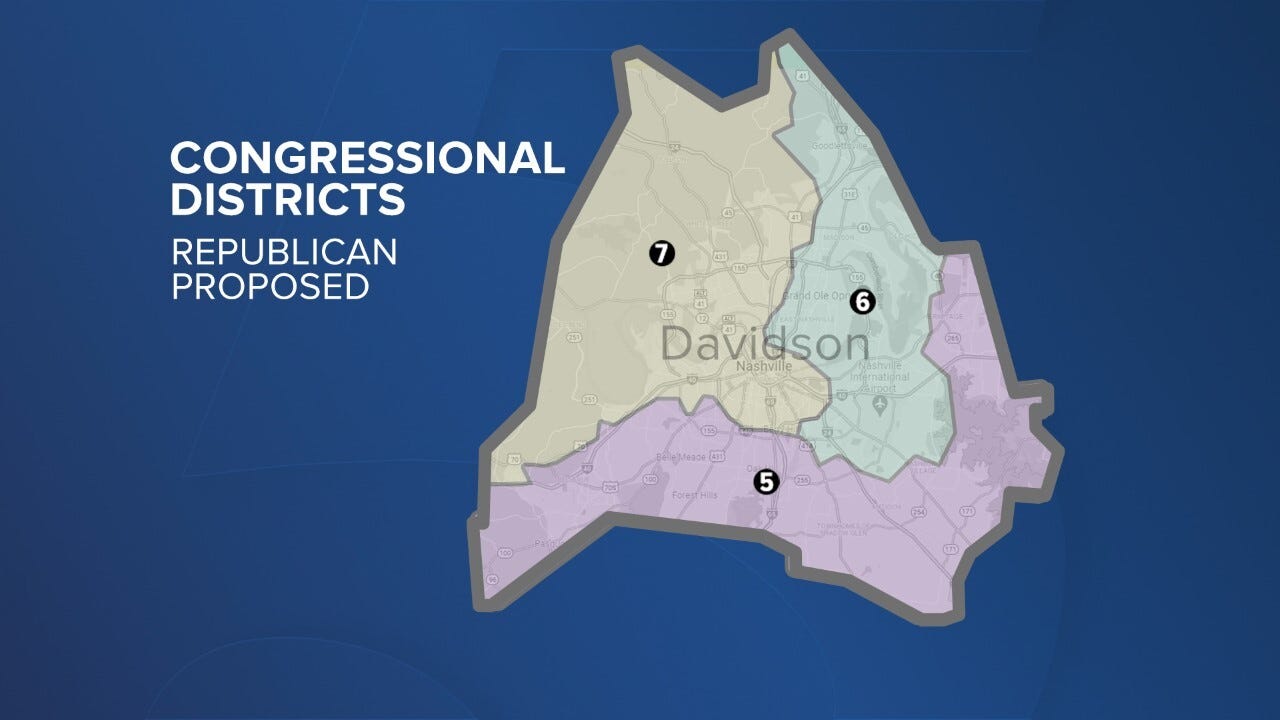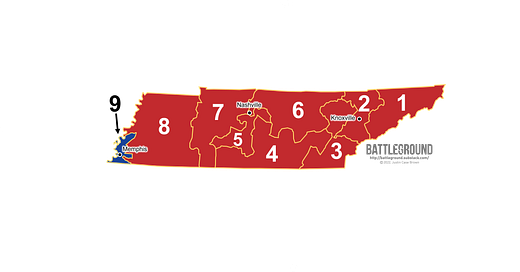Tennessee: Democrats Are Drawn Out of Nashville
As Nashville is cracked across three new congressional districts, Rep. Jim Cooper announces his resignation from the city's old seat.
Topline Takeaways
Republicans held complete control in Tennessee’s redistricting process.
Democrats were effectively drawn out of a seat in Nashville as none of the new districts hold the city in its entirety.
While Republicans’ strategy may net them an additional seat now, demographic changes could shift as many as three seats into competitive territory in the future.
Who’s In Control?
Tennessee’s congressional districts are drawn by the legislature and approved by the governor. Since Republicans hold control in all three branches of state government, they held complete control over the redistricting process, enabling them to ignore Democratic concerns.
District Breakdown
Much of the commotion over redistricting is focused on Middle Tennessee. Districts in the eastern and western reaches of the state saw few changes and largely kept their partisan and demographic makeups constant. Districts 5, 6 and 7 were completely redrawn and as a result Nashville has practically disappeared off of the state’s congressional district map.
Previously Nashville was fully encompassed by TN-5, a congressional district that held the entirety of Nashville’s Davidson county along with neighboring Dickson and Cheatham counties to its east. That now-defunct district supported Joe Biden in the 2020 election by a wide margin of 24 points.

Since Tennessee’s statutes governing redistricting don’t require mapmakers to keep counties whole, Republicans leapt at the opportunity to draw Democrats out of a district. The “cracking” of Nashville splits the city’s voters across three different districts, all of which stretch deep into neighboring rural counties. Tennessee’s fifth congressional district now favors Republicans by 11 points, a whopping 30 point swing to the right.
The state has not provided statistics on the number of voters each district would receive from Davidson (a standard analysis performed by many other states….) and Republicans may need to track this urban-rural balance moving forward to maintain power. In order to transform TN-5 into a safely Republican seat, they had to relinquish some of their voters in neighboring TN-6 and TN-7. That caused these insanely Republican seats (both supported Trump by margins of more than 35 points in 2020) to shift toward Democrats by nearly 20 points each. While TN-6 and TN-7 still remain safely Republican seats, these districts now represent some of the state’s fastest growing areas. Much of Tennessee’s recent growth is centered in and around Nashville. Demographic change over the next decade may prove out the riskiness of this strategy.
While Republicans net a new seat for themselves today, they may be jeopardizing as many as three seats in the future if the state continues to diversify at its current speed. The state’s White population saw a 5 percentage-point decrease from 77% down to 72% of state residents identifying as such. Nashville is on the cusp of becoming a minority-majority city with only 56% of residents identifying as White (down from 61% in 2010.) Unless the Republican party transforms and diversifies along with the state, today’s “win” for Republicans may eventually lead to losses.




